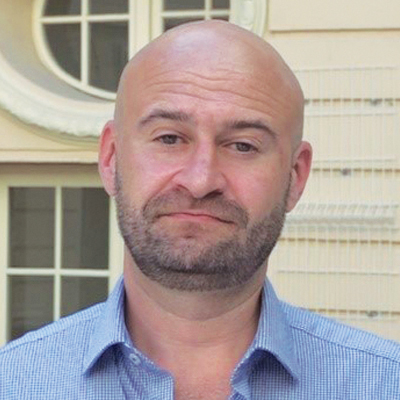Conference Coverage
‘A Win-Win Situation’
Phoenix CRetro Re CEO: Sovereign cat bonds offer important protections for infrastructure projects such as China’s Belt and Road Initiative.
Kirill Savrassov, chief executive officer of Phoenix CRetro Re, says the reinsurer's foray into sovereign catastrophe bonds is a win-win solution for governments in earthquake-prone regions, where insurance penetration has been historically low. He spoke with AMBestTV at Les Rendez-Vous de Septembre in Monte Carlo, Monaco.
Following is an edited transcript of the interview.
You're a Bermuda insurance-linked securities-based specialist. Can you tell us what projects you're working on right now?
The key project we have at the moment is the introduction of sovereign catastrophe bonds to the government of the ECIS [Europe and Commonwealth of Independent States] region, which we do in association and in partnership with the United Nations Development Programme, and we have very good partners in them because these questions have very serious implications for that particular region.
Due to some historical reasons, insurance penetration stands at a very low level, and unfortunately, insurance does not play an important role for the government if some really devastating event happens. However, this region and these territories historically have been prone to serious catastrophic events like earthquakes, for example.

What is most important is over the last decade, private markets developed some instruments which can be really instrumental and really successful for the transfer of catastrophic risks at the sovereign level.
Kirill Savrassov
Phoenix CRetro Re
Why is the ILS program needed there?
Unfortunately, insurance didn't develop to the level where it can be a proper relief instrument at the state level. What is most important is over the last decade, private markets developed some instruments and private markets do have some expertise, which can be really instrumental and really successful for the transfer of catastrophic risks at the sovereign level.
How does it relate to the China's Belt and Road Initiative?
That is also very important because even without it yet being implemented, there is no doubt that the Belt and Road Initiative is one of the largest infrastructure projects in mankind's history. However, when leaving China on the way to Europe, it passes through some, probably the most, earthquake-exposed territories of the world.
Having large infrastructure investments in these territories, the problem is if something happens, and it has happened ... I mean like when Tashkent [the capital of Uzbekistan] was 80% demolished in the 1966 earthquake. If that happens, it has also a very important implication not only for physical damage for those infrastructure bits, but also it has some very important contingent business interruption consequences.
Even now, there are more than 10,000, in fact 13,000, trains traveling from China to Europe on this route at the moment. You can imagine what would happen if a large earthquake demolished even five kilometers of the railways. That's really important and in the interest of not only China investing into the project, but for those transit countries, who very much rely on participation on Belt and Road as a reorientation to the West.
It's really important to use some form of infrastructure protection. Things like critical infrastructure, for example the railways, they do not belong to private individuals. They belong to the state. It's a natural state responsibility actually to repair this.
Instruments like catastrophe bonds—based on the big success of other territories like Latin America, for example, like the Caribbean Insurance Facility, like African Risk Capacity—can be really implemented in that territory and work for real critical protection. It's a win-win situation, and it's a win-win partnership.
What is very important is collaboration between international agencies like the United Nations, for example, and the private market because the private market does have a solution and people like the United Nations Development Programme, they do have a capability to introduce these principles at the governmental level.
This is not a little project. This is a systemic protection of critical infrastructure, which helps very much in case of a really big earthquake, for example.
Meg Green is a senior associate editor, AMBestTV. She can be reached at meg.green@ambest.com.



























